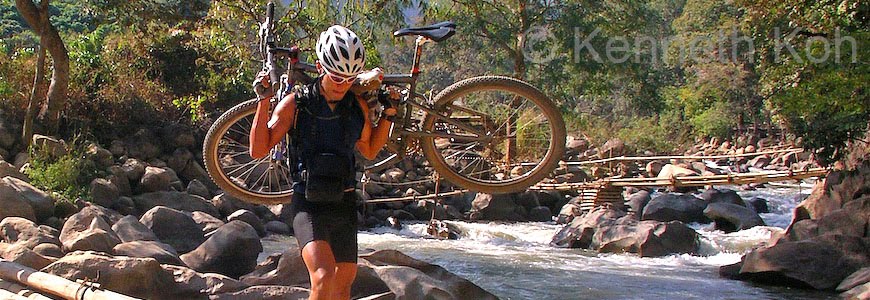Previsualization
It is said that cameras take snapshots, but photographers make photographs. What's the difference? Let's say you walk up to a pretty scene, you say "that's nice", whip out your camera and take a shot. That's taking a snapshot. On the other hand, if you walk up to a pretty scene, and say "that's nice, but this scene would really look better if I could change my position to get lower (or higher, or closer to the subject), and if I came back at sunrise (or sunset). And what would really nail the shot is if I change lenses and use a really small aperture to maximize depth of field, etc...". That's making a photograph.
Previsualization is having an idea of what you want the photograph to look like, and then going out to create it.
There's nothing wrong with taking a snapshot. Some great photographs are just found that way. But most other times, we have to work at it. The best way to learn previsualization is to study the photographs of others and yourself. How is the final image different from yours? How did they make the shot? What lens did they use? What aperture/shutter speed? How was the light? What would you have done?
Photo Critiques
A photo critique is a written or verbal evaluation of a photograph based on careful observation to garner feedback about your images with the goal of improving them. Getting your photos critiqued doesn't have to be a painful, ego-busting experience. There are plenty of photo critique websites, and most of them are very supportive. It's a great learning experience.
Composition
We've all heard the 'Rules': The rule of thirds, the 'level horizons' rule, the 'get closer to your subject' rule, the 'watch your edges for intrusions' rule, the 'less is more' rule... and we have all heard the phrase 'there are no rules', so which is it? Quite frankly, these 'rules' do have a place in photography, especially for new photographers looking for guidance. Having said that, travel and adventure photography is generally very dynamic, and you may not have the luxury of time to place your subject according to the rule of thirds, level your horizon, move closer to your subject, while watching the edges of your frame, and simplifying your image.
The rules are best left to analysis or photo critique after the fact, and used to build up photography experience and develop compositional 'instincts'.
When I look through the viewfinder, I'm just seeing shapes, lines, color and flow. I move these elements within the viewfinder until it looks good to me, and then I shoot it. I don't really analyze stuff when I put the viewfinder up to my eye, it's more 'feeling' and 'emotion'. The hard thinking is done in the previsualization phase before I lift up the camera to my eye.
Light
There are a lot of different lighting conditions, and each has a different emotional response. Light has:
Direction (front, which is normal and; side and back light, which is dramatic);
Quality (diffuse or soft, and hard); and
Temperature (warm which is golden or red, and cold, which is bluish).
I'm an editorial shooter, and my job is to grab an editor's attention with bold, punchy images. But I don't have the luxury of time to wait until the light is perfect to shoot what I want. So I do it the other way. I shoot what the light allows me to. At sunrise or sunset, when the light is warm and the shadows are long, I can get dramatic scenic or landscape shots. When it's overcast, I'll try to get some portraits or close-ups. At mid-day, I can get shots with some bold color, but I'll need to watch the shadows or tone them down with some fill flash.
 | |||
| Rules? We don't need no stinkin' rules! Get out there and play! This is Ginger, my golden retriever, reaching for her favorite toy. I was playing with my new camera and underwater housing. |
Play
The last thing you need is someone telling you how to have fun, and really, that's what photography as a hobby is all about. Sure, its good to want to be better, but at the end of the day, (if you don't have clients or editors ;o) the only one you need to please is yourself, so get out there and shoot!





